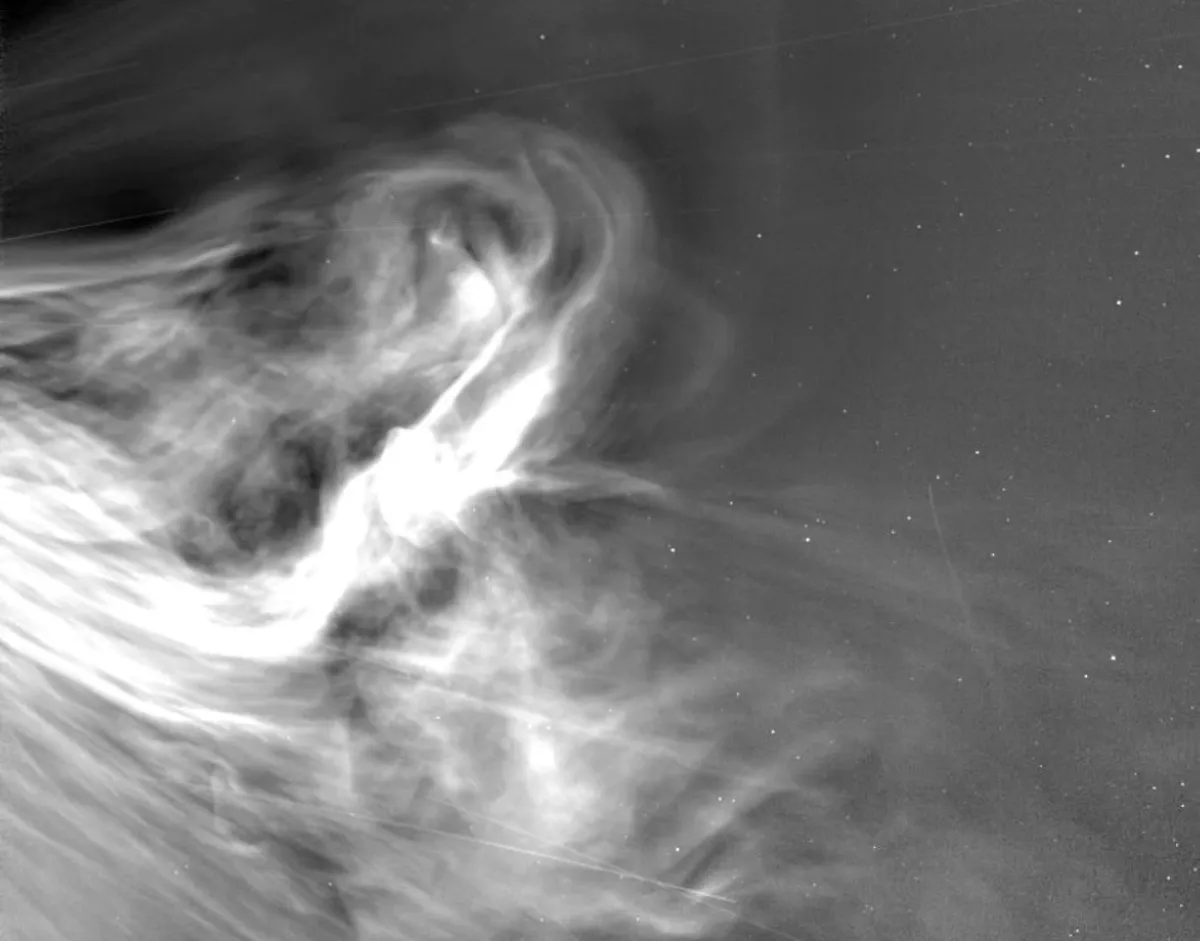
NASA’s Parker Solar Probe has made history by capturing the closest images of the Sun ever taken, at an astonishing distance of just 3.8 million miles from the solar surface. These groundbreaking close-up images reveal intricate features of the solar wind, which is a continuous stream of electrically charged subatomic particles released by the Sun, traveling at speeds that exceed 1 million miles per hour.
The recent images, obtained during a record-breaking pass by the Sun in late 2024, are crucial for scientists striving to unravel the mysteries surrounding the solar wind. This knowledge is vital for understanding how solar wind affects Earth and other objects throughout the solar system. Nicky Fox, the Associate Administrator for the Science Mission Directorate at NASA Headquarters in Washington, expressed excitement about the findings: “Parker Solar Probe has once again transported us into the dynamic atmosphere of our closest star. We are witnessing where space weather threats to Earth begin, with our eyes—not just with models.”
During its closest approach to the Sun on December 24, 2024, the Parker Solar Probe skimmed through the Sun's outer atmosphere, known as the corona. The spacecraft utilized an array of scientific instruments, including the Wide-Field Imager for Solar Probe (WISPR), to collect valuable data. The new WISPR images provide a detailed look at the corona and the solar wind, showcasing the complex dynamics at play.
The solar wind has far-reaching effects across the solar system, influencing phenomena such as auroras, the stripping of planetary atmospheres, and the induction of electric currents that can disrupt power grids and communications on Earth. A comprehensive understanding of the solar wind begins with examining its origins at the Sun, and the WISPR images offer scientists a closer look at the processes occurring shortly after the solar wind is released from the corona.
The WISPR images highlight the critical boundary known as the heliospheric current sheet, where the Sun’s magnetic field shifts direction. For the first time, scientists captured the collision of multiple coronal mass ejections (CMEs)—large eruptions of charged particles that play a significant role in space weather—at high resolution. Angelos Vourlidas, the WISPR instrument scientist at the Johns Hopkins Applied Physics Laboratory, noted, “In these images, we’re seeing the CMEs basically piling up on top of one another.” This visualization is essential for understanding how these CMEs merge, which can complicate predictions about their trajectories and effects on Earth.
The concept of the solar wind was first proposed by renowned heliophysicist Eugene Parker in 1958, revolutionizing our understanding of the solar system. Despite initial skepticism, Parker's theories laid the groundwork for future missions. Before the launch of the Parker Solar Probe in 2018, NASA and its international partners conducted a series of missions, including Mariner 2 and Helios, which provided valuable insights into the solar wind from afar. Now, Parker Solar Probe is filling in the gaps in our understanding with its close proximity to the Sun.
While the solar wind appears as a steady breeze at Earth, Parker Solar Probe has discovered that it is highly variable near the Sun. Upon reaching within 14.7 million miles of the Sun, the spacecraft identified zig-zagging magnetic fields, known as switchbacks. Scientists have found these switchbacks to be more prevalent than previously thought, complicating the understanding of solar wind dynamics. The probe even detected that the boundary of the corona is uneven and more intricate than earlier models suggested.
Understanding the slow solar wind, which travels at approximately 220 miles per second, is of particular interest because it can create conditions at Earth that rival those caused by CMEs. The Parker Solar Probe has confirmed the existence of two distinct types of slow solar wind, categorized by their magnetic field characteristics. One type, known as Alfvénic, features small-scale switchbacks, while the other, non-Alfvénic, does not exhibit such variations.
Current theories suggest that the non-Alfvénic wind may originate from helmet streamers, large plasma loops connecting active regions on the Sun, while the Alfvénic wind likely comes from coronal holes, which are cooler, darker regions in the corona. As Parker Solar Probe continues to gather data during its upcoming passes through the corona, including the next one on September 15, 2025, scientists hope to confirm the origins of the slow solar wind and deepen their understanding of solar phenomena.
NASA’s Parker Solar Probe is at the forefront of solar exploration, providing unprecedented insights into the Sun's behavior and its effects on space weather. As researchers analyze the data collected from these extraordinary close-up images, they are paving the way for enhanced predictions of solar activities that could impact not only astronauts in space but also technology on Earth. The findings from Parker Solar Probe are fundamental for safeguarding our technological infrastructure and advancing our knowledge of our solar system.